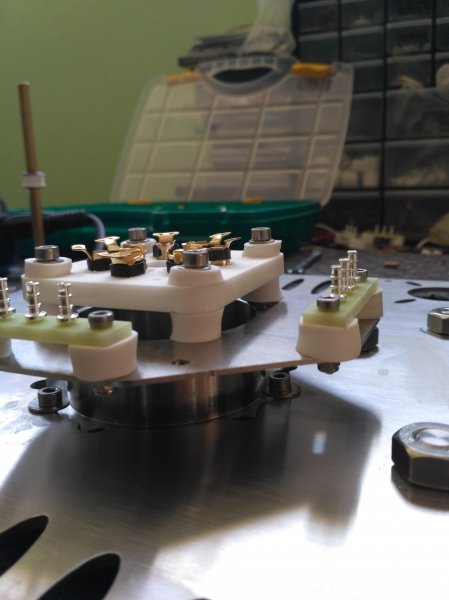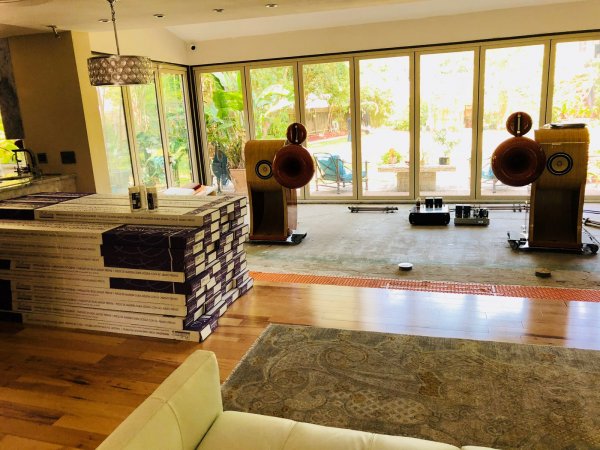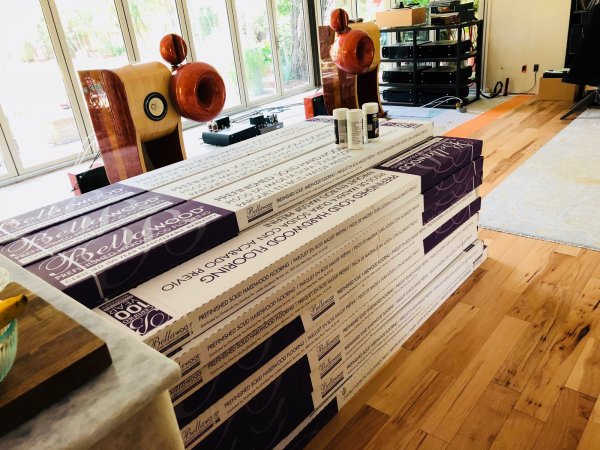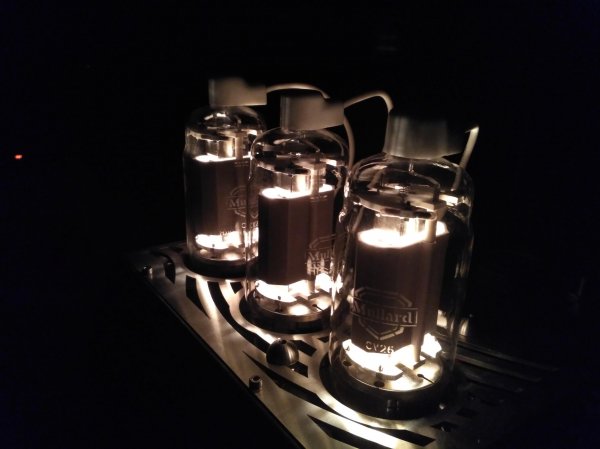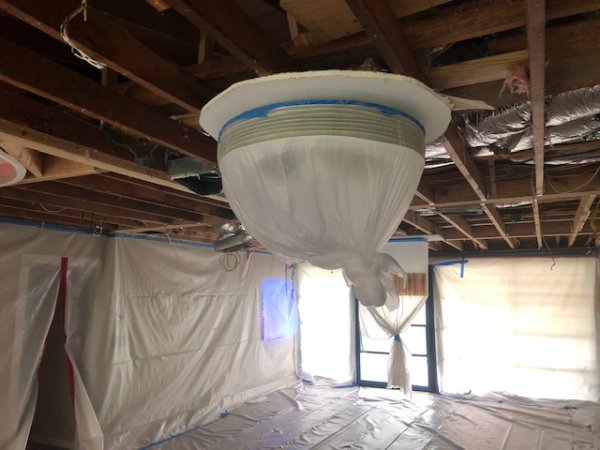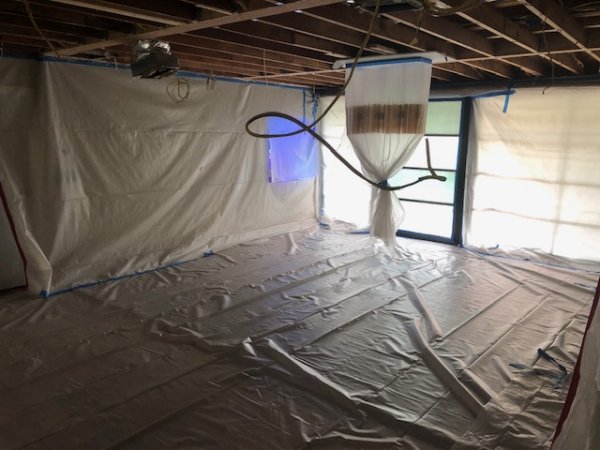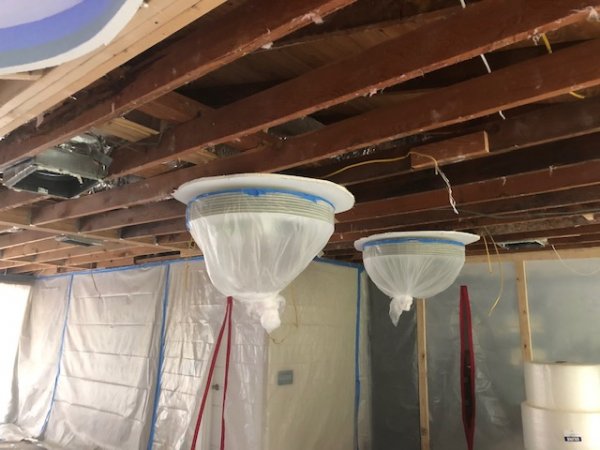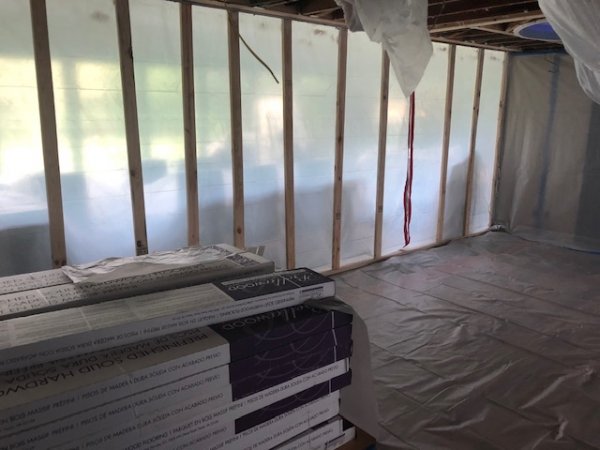Full Limited Edition Aries Cerat System Build and World Exclusive LEGEND Series!
- Thread starter Believe High Fidelity
- Start date
You are using an out of date browser. It may not display this or other websites correctly.
You should upgrade or use an alternative browser.
You should upgrade or use an alternative browser.
Hello nonesup
It is the tube bias current. The bias on the Siemens E280F can be adjusted from 190 - 290. I find I like it best on 250. It only needs to be set periodically, i find it holds that value for some time accurately.
By setting it lower it sounds a bit thinner, brighter, and setting it higher sounds a bit fuller and more body. It is subtle but a nice facility. it allows some system tuning for the rest of your system. I have just bought 2 pairs of Siemens tubes, same as the ones in the DAC with date codes, they cost me only 110 euros. One pair of tubes should be good for 2 years at least. So I am good for 6+ years!
On the digital board, you can see all the AD1855 chips. Many think they are the best sounding chip ever made, and have no extra processing of the signal, so as intact as possible, straight though bit prefect data. The USB board is at the top of the picture, and the super clock for the SPDIF is in the centre above the bias meter position. The 2 aluminium tubes with the AC logo on are the custom made I/V transformers. They convert the current to voltage coming off the chip array. This technique is also used by Audio Note and Ypsillon. There are 8 separate power supplies to the digital array, the red LEDs.
I don't know the technicalities, but Stavros has no coupling capacitors in the signal path. Normally you have caps after the tubes to negate DC I believe? But I do know coupling caps have a big influence on the sound, and any cap no matter how good will have a loss, a negative effect. Compared to my Audio Note DAC 5 the Kassandra is much more detailed and dynamic, but so smooth and zero fatigue, no digital sound. It also crucially has the mass and body that you hear in a top TT, unlike a lot of digital which doesn't, sounds flat and anaemic. The midrange is wonderful, the best I have ever heard in digital.
Under this huge digital board there is actually 2 large output transformers. The front section of the DAC, under the separate top plate houses a very large power supply, big torroid, large caps array and 2 large chokes. When I power the DAC down, the LEDs on the power supply stay lit for nearly an hour! This indicates the amount of energy storage in the power supply, what Stavros calls his 'Pseudo Battery' supply. So pure clean power. I don't have a photo of this section, but Stavros does.

One minor correction for clarity: Kassandra uses AD1865 18 bit Dacs and not AD1855, which is a DS DAC chip I believe.
I speak without having heard it, but both your opinions and those of other forum members, as well as professional reviewers indicate that it is a DAC with a detailed sound, but DENSE. This is fundamental for me, since 95% of my time I hear classical music and much of it orchestral. An orchestra can not sound anemic, a singer can do it (although it's not the best) but an orchestra can not, because all the magic is lost.
There is another aspect that you have pointed out and that for me is very important; I HATE the masses of screeching violins, which are common in many recordings. You have indicated that this does not happen with Kassandra and I like that a lot.
On the other side of the scale, is that I had a "complicated" year with a totally unexpected expense and for my important, so I have to wait a bit to recover financially. This suits me to see if Stavros really introduces a UPnP entry. I have my system optimized for this input and if the sound is good, I prefer it to USB.
So when I am in a position to be able to make the DAC change, I will start listening to those I can, although I certainly recognize that the Kassandra leaves as my favorite.
I can confirm the solidity of the sound from Kassandra and dynamics too!
I HATE the masses of screeching violins, which are common in many recordings.
With the Kassandra you will notice that it is mostly (the exceptions confirm the rule) not the recording but the lack of proper reproduction. The lack in the capacity to have the resolve in combination with the weight. You are very right to think the AC gear does this.
As a classical music fan I also very much appreciate being able to hear the difference in violin bloom between period instruments and contemporary instruments, or being able to listen to the highest tones of a trumpet without hearing any digital glare at realistic volume (think of the opening of Tchaikovsky's 4th symphony), this is the gear to hear.
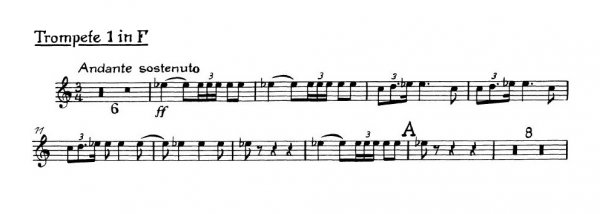
One minor correction for clarity: Kassandra uses AD1865 18 bit Dacs and not AD1855, which is a DS DAC chip I believe.
Thanks morricab, my typo. I should have got that right, I have owned 5 DACs with that chip!! All sounded great as well, but not on the Kassandra level.... AD1865 NK chips, 16 in total.
Listening to Bach Organ BWV 564 Peter Hurford - ooh my
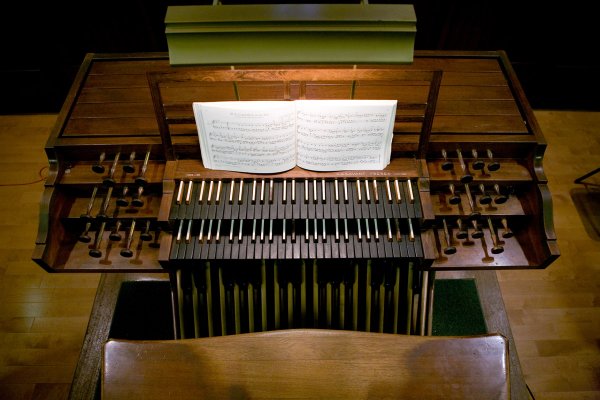
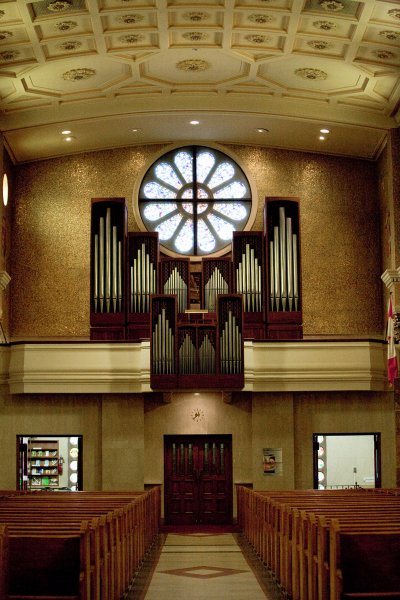
With the Kassandra you will notice that it is mostly (the exceptions confirm the rule) not the recording but the lack of proper reproduction. The lack in the capacity to have the resolve in combination with the weight. You are very right to think the AC gear does this.
As a classical music fan I also very much appreciate being able to hear the difference in violin bloom between period instruments and contemporary instruments, or being able to listen to the highest tones of a trumpet without hearing any digital glare at realistic volume (think of the opening of Tchaikovsky's 4th symphony), this is the gear to hear.
View attachment 43417
I totally agree about the opening of the fourth of Tchaikovsky.
I use the version of Eugeny Mravinsky with the Leningrad Philarmonic Orchestra. This version is musically (to me) wonderful, but it's a typical Deutsche Grammophon recording, with the trumpets sound unpleasant
I totally agree about the opening of the fourth of Tchaikovsky.
I use the version of Eugeny Mravinsky with the Leningrad Philarmonic Orchestra. This version is musically (to me) wonderful, but it's a typical Deutsche Grammophon recording, with the trumpets sound unpleasant
YES!
That is my reference version. I have it in 16/44.1, 24/96 and vinyl reissue. The hires version is markedly better than the cd-resolution! And since I have the vinyl reissue, I like that one a bit more still as well but I could forever be happy with the hires version.
Anyway, it is not the recording. It is recorded with a lot of transparency that with the wrong gear makes you grab at the volume control. I listen to concert level all way through ??. A pity I don't live in Spain anymore to share the experience with you.
Hi.
I have the impression that you are a listener with extensive musical knowledge from a technical point of view. Unfortunately for me, it is not my case, since I know that with them I would still enjoy music more. I'm just an amateur that when he talks about a version that seems magnificent, he can not argue more than the sensations that come from listening to him.
By the way, since we were talking about Tchaikovsky (I'm sure you'll know it) the version of the sixth one by Ferenc Fricsay with the Berlin Radio Symphony Orchestra, has moments in the fourth movement of such a deep sorrow, that at some time I almost got a tear.
Regards
I have the impression that you are a listener with extensive musical knowledge from a technical point of view. Unfortunately for me, it is not my case, since I know that with them I would still enjoy music more. I'm just an amateur that when he talks about a version that seems magnificent, he can not argue more than the sensations that come from listening to him.
By the way, since we were talking about Tchaikovsky (I'm sure you'll know it) the version of the sixth one by Ferenc Fricsay with the Berlin Radio Symphony Orchestra, has moments in the fourth movement of such a deep sorrow, that at some time I almost got a tear.
Regards
I totally agree about the opening of the fourth of Tchaikovsky.
I use the version of Eugeny Mravinsky with the Leningrad Philarmonic Orchestra. This version is musically (to me) wonderful, but it's a typical Deutsche Grammophon recording, with the trumpets sound unpleasant
For DG, if you buy things from the tulip era, where they had tulips around the outer circle of the LP, those are good quality. After that they sold their tubed recording equipment. If you PM zerostargeneral he might know which is the best pressing for Tchaikovsky's 4th
Had in depth listen of the Aqua Formula XHD dac at Blue58.
Many many good things, but especially the ability to really reproduce the full attack and wood of violin w absolutely no shrieking, terseness.
Very analog like in this regard.
Many many good things, but especially the ability to really reproduce the full attack and wood of violin w absolutely no shrieking, terseness.
Very analog like in this regard.
Billy's room is being finished ,room treatment, flooring etc,if i am not mistaken.
When everything is done room wise,then we ship the Achilleas amplifiers.
Meanwhile,we rehearse the glass facias (two out of the three chassis stack, pc). It is a bit "old" picture tbh,now the glass are already finished with the aesthetic part(engraved etc),we are currently working on the metalwork for the top chassis(output chassis) and first power ups this week.
Cheers
Stavros
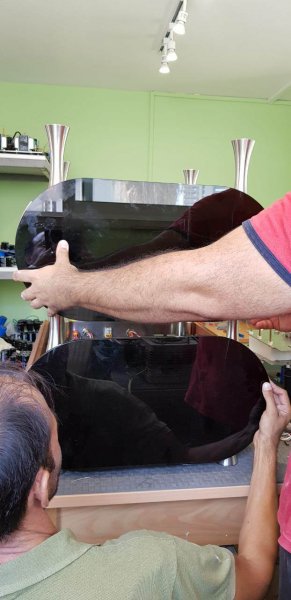
When everything is done room wise,then we ship the Achilleas amplifiers.
Meanwhile,we rehearse the glass facias (two out of the three chassis stack, pc). It is a bit "old" picture tbh,now the glass are already finished with the aesthetic part(engraved etc),we are currently working on the metalwork for the top chassis(output chassis) and first power ups this week.
Cheers
Stavros

Similar threads
- Replies
- 30
- Views
- 3K
- Replies
- 26
- Views
- 2K
- Replies
- 3
- Views
- 1K
- Replies
- 1
- Views
- 714
- Replies
- 85
- Views
- 14K


